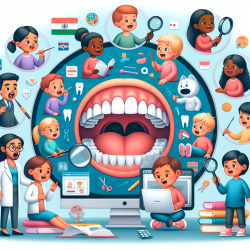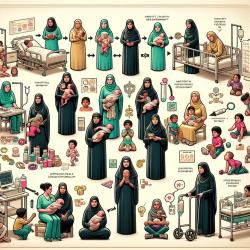Introduction
In the realm of speech-language pathology, ensuring a safe and conducive environment for therapy is paramount. The recent research article, "Preventing Airborne Disease Transmission: Review of Methods for Ventilation Design in Health Care Facilities," offers invaluable insights into how ventilation design can mitigate airborne disease transmission. While the study focuses on healthcare settings, its findings are equally applicable to school environments where TinyEYE operates. This blog explores how practitioners can implement these findings to enhance their skills and improve outcomes for children.
Key Findings from the Research
The research highlights several critical aspects of ventilation design that influence airborne disease transmission:
- Ventilation Systems: Different systems, such as mixing, displacement, natural, and hybrid, have varying impacts on pathogen dispersion.
- Air Exchange Rate: Higher rates typically lead to better dilution of pathogens, reducing infection risk.
- Environmental Conditions: Temperature and relative humidity significantly affect pathogen viability.
- Airflow Distribution: The structure of airflow can either aid or hinder pathogen removal.
- Engineered Disinfection: Techniques like filtration and UV radiation can enhance air quality.
Applying Research to School Settings
For practitioners in school settings, integrating these ventilation strategies can significantly enhance the safety and effectiveness of therapy sessions:
- System Selection: Choose a ventilation system that suits the specific needs of your school environment. Displacement ventilation, for instance, can help segregate contaminated air from clean air.
- Optimize Air Exchange: Ensure that the air exchange rate meets or exceeds recommended levels to maintain a healthy environment.
- Control Environmental Conditions: Monitor and adjust temperature and humidity levels to optimize pathogen viability reduction.
- Strategic Airflow Management: Design airflow paths to maximize pathogen removal and minimize recirculation.
- Implement Disinfection Technologies: Utilize HEPA filters and UV lights to further purify the air.
Encouraging Further Research
While the research provides a solid foundation, it also highlights areas where further investigation is needed. Practitioners are encouraged to engage in ongoing research to refine ventilation strategies continually. Collaborating with engineers and researchers can lead to innovative solutions tailored to specific educational settings.
Conclusion
By applying the findings from the "Preventing Airborne Disease Transmission" study, practitioners can enhance their skills and create safer, more effective therapy environments. This approach not only aligns with TinyEYE's mission to provide high-quality online therapy services but also ensures the well-being of children in schools.
To read the original research paper, please follow this link: Preventing Airborne Disease Transmission: Review of Methods for Ventilation Design in Health Care Facilities.










